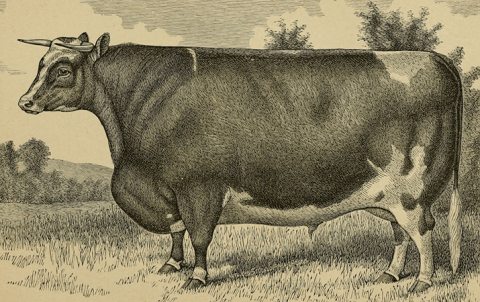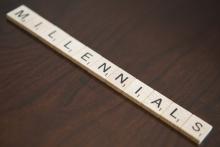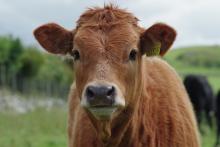
It’s 1906 at the West of England Fat Stock and Poultry Exhibition. People are lined up to guess the weight of a steer on display. It turns out that the added and averaged guess of all guessers was within one pound of the actual weight of the cow – and closer than any one person’s guess. This finding, repeated in other settings, suggests that the output of a group of different people is more accurate than any one person: amateur or pro.
NIH’s mission is turning discovery into health. That discovery gets done by people—creative scientists of all types all across the nation. As NIH’s Chief Officer for Scientific Workforce Diversity, I am keenly interested in what seems a simple question: Who are the best people for this task? How can we be sure we’re getting the best ideas?
Science has the answer, telling us that diversity drives innovation in many ways. Before I explain further, here’s a question for you. Which response, A or B, best defines “diversity?”
A. Different experiences, opinions, and thoughts
B. Identity: sex, gender, race, ethnicity, disability, and socioeconomic status
Which answer you choose likely depends on who you are: your age and life experience, says a 2015 study. Millennials, for the most part, chose A, noting diversity’s effects on teamwork. Non-millennials, on the other hand were more likely to select B, pointing to the importance of fairness.

What about NIH: which definition of diversity is more important? Consider a few real-life scenarios, and then I’ll tell you how we’re using this evidence to enhance diversity at NIH.

It’s 1906 at the West of England Fat Stock and Poultry Exhibition. People are lined up to guess the weight of a steer on display. It turns out that the added and averaged guess of all guessers was within one pound of the actual weight of the cow – and closer than any one person’s guess. This finding, repeated in other settings, suggests that the output of a group of different people is more accurate than any one person: amateur or pro.
A much more recent 2014 study showed that a group of ethnically similar financial traders were 33 percent less able to accurately predict stock prices than was an ethnically diverse group. What’s more, the similar group members accepted inflated prices based on speculation, contributing to a harmful financial bubble. But if we know this, why is it that applicants whose names suggest that they might be African American are less likely to receive a job call-back, compared to applicants with White-sounding names?

What about science? In a 2013 study, economists looked at 2.6 million U.S. scientific papers across many fields, using surnames of co-authors as a proxy for assessing ethnic diversity. They controlled for other factors. The first result was expected: “like” associates with “like,” in that ethnicities published more often together. But a second result may surprise you: those papers with co-authors of multiple ethnicities had more citations and were published in journals with higher impact factors. Then why is it that scientists who pride themselves on objectivity in evaluating data consistently rated applications with male names higher than those with female names, even when the information contained in the applications was identical?
Although a lot of factors are involved, researchers believe that when diversity produces better outcomes, it is because friction is productive. In the face of difference, we take a closer look at our own assumptions, and we feel compelled to listen to others’ views.
You could sum it up this way: wisdom of the crowd is the power of diversity, but something is getting in the way of our ability to leverage this power.
Could this be due to bias, explicit or implicit? That is, bias that we are aware we have, vs. bias we don’t even recognize in ourselves?
Research shows that “mental shortcuts,” or heuristics, lead to judgment errors that emerge in everyday life and also in major decisions, such as recruitment and hiring. Because the human brain is wired to rapidly process multiple pieces of information by using mental short cuts, we are all biased. Recognizing these human truths is a first step to interrupting subconscious snap judgments that may not have the best, or fairest, outcomes.
As I mentioned, here at NIH, we are implementing the results of this rigorous research on the science of diversity, working on ways to minimize subconscious, or implicit, bias in scientific settings. One way is through providing educational modules on bias to scientists leading recruitment searches on how to recognize and mitigate potential bias about race and gender in science. To see whether the modules are effective we give a pre- and post-test to measure attitudes known to associate with certain biases, and then we assess the diversity in their selected pool of candidates. At other institutions, these approaches have had a positive impact on diversity outcomes, and if we are successful we hope to expand the education across NIH.
Stay tuned for the results!

